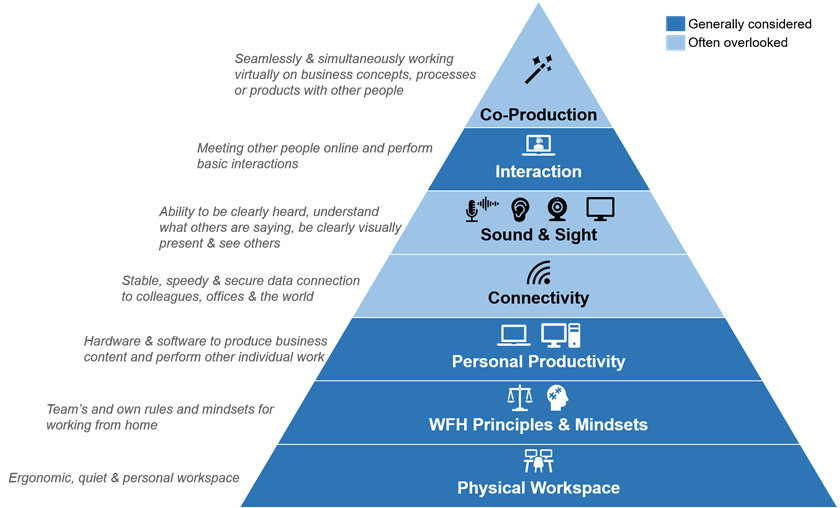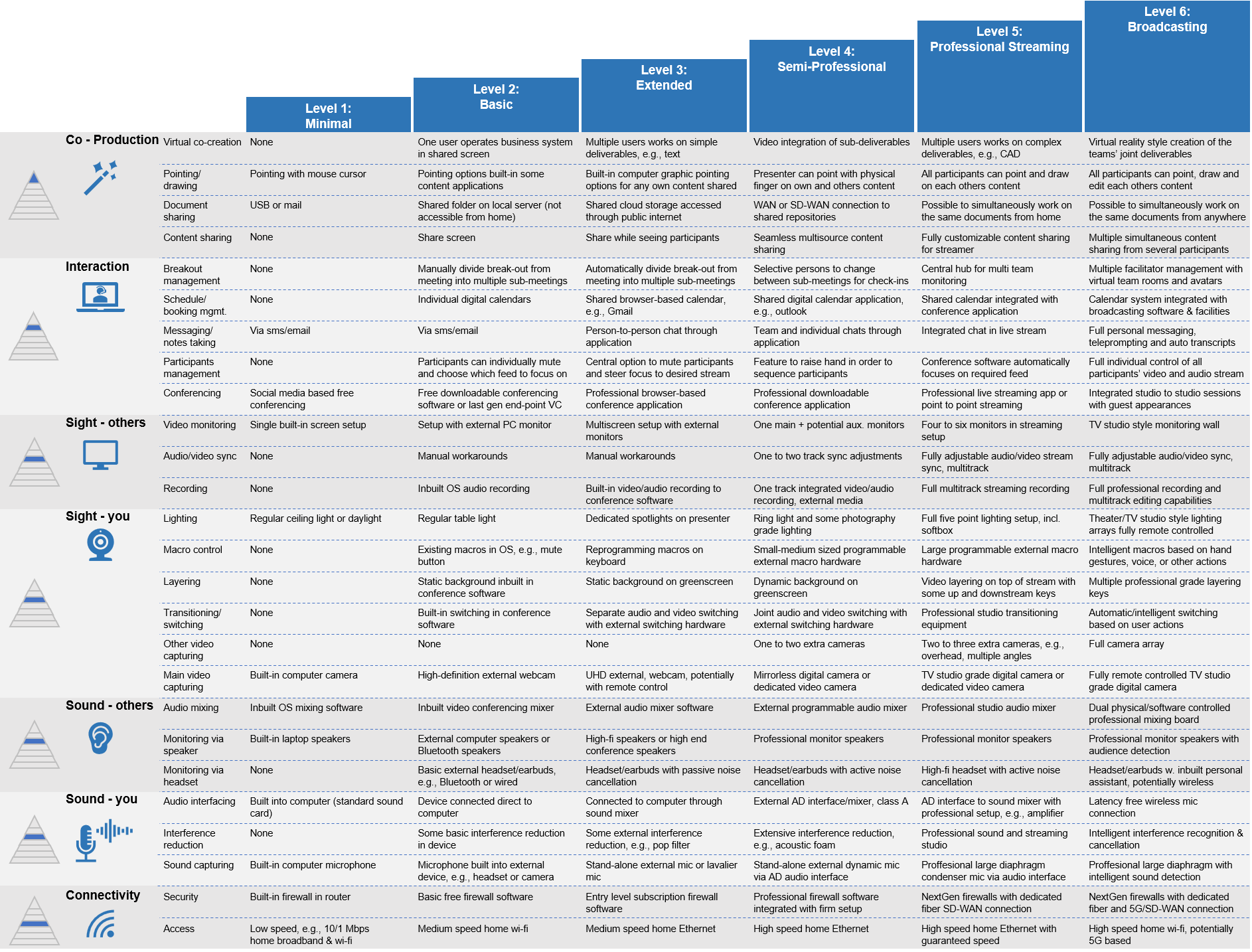Addressing three ignored areas will boost digital collaboration in the new WFH times. Where are you in the maturity model?
The Phenomenon Is Here To Stay
Remote work and working from home (WFH) have been around for years. However, prior to Covid-19 there was still around 40% of companies in the world not allowing their employees to work from home. Many thought that the world would very slowly and gradually develop towards the hybrid office and WFH model. Then came Covid-19. Now millions of people are forced to work from home, many of which are not really set up for it.
We have asked clients and peers about their learnings and first hand got our own experiences. Hopefully the pandemic will end soon in the foreseeable future and some will return to work as normal. Many believe, and so do we, that WFH will be an integral way of doing business in many industries. Why? It provides clear benefits: Efficiency, flexibility, work/life balance, focus, improved stress & health. But also has challenges: Lack of social relations, difficult to obtain trust, less separation between work and life, less adhoc learning and a multitude of technology issues. It is here to stay - and the problems that are associated with it must be solved.
Three Tech Issues Often Overlooked
It takes more to succeed with WFH than a PC and MS Teams or Zoom. In fact, the "WFH pyramid of needs" contains seven key aspects that must be in place in order to effectively and efficiently work from home, realize the benefits and address the challenges.

Illustration 1: The WFH pyramid of needs. Source: Oleto Associates.
Firstly and most fundamentally, an adequate physical workspace is needed. This must help reduce stress, be ergonomic and quiet so you can be productive and inspired for hours. Most organizations today are already aware of what is required of the physical workspace for its employees. The majority of the concepts used in the corporate offices can be transferred to the home offices as well, with special attention given to separation of private areas and workspaces.
Secondly, the right WFH principles & mindsets must be in place. This would include own rules for when and how to work but also a set of company guidelines outlining what to expect from each other when working from home. Many companies have already defined these.
Thirdly, the employee of course needs personal productivity tools to get own work done. This would typically entail just a stationary PC or laptop and associated software.
Fourthly, good connectivity is required. While some companies provide their employees with paid broadband subscriptions, many now a days do not. Furthermore, it is often up to the individual to ensure that they have a stable coverage within their own homes. Not a simple task, even for tech enthusiasts, with multiple family members fighting for bandwidth. Many have experienced that simply upgrading their broadband service helped resolve basic communication issues and comments such as "your are breaking up" or "you sound like a robot".
Fifthly, clear sound & sight are crucial for effective communication online. Typically a severely neglected area, where investments are kept to the bare minimum, as most people believe the laptop is equipped with an adequate microphone, webcam and speaker. However, when spending hours each day it can become extremely tiresome to listen to scrappy sound and watch unclear video. For individuals that lead or facilitate online sessions this can become an even bigger problem as they do not have the strong presence in the room as they are used to.
Sixthly, a way to interact with customers, peers and business associates online is needed. By now there is plenty of free and subscription based conference software supplying basic interaction services. Often some kind of conference software is supplied by the employer.
Finally and often ignored, is support for producing work together online. The aforementioned conferencing software covers some co-creation capabilities, however far from enough to truly cooperate on complex content or problems simultaneously. Technology also still has some way to go in this area, however there are some creative solutions which can be deployed to improve the situation.
In summary, we believe 3 areas required to successfully work from home are being ignored/down-prioritized (all tech related): Connectivity, Sound & Sight, Co-Production.
The Maturity Model: How to Step Up
Journeying into the jungle of options for digital collaboration technology can be a daunting task for anyone. Illustration 2 zooms into the top four levels of the WFH pyramid of needs (illustration 1) in order to provide some guidance for people who are considering upgrading their setup.
Across 26 areas there are 6 levels of maturity that could illustrate the next step.

Illustration 2: The WFH maturity model - focusing on collaborative technologies. Source: Oleto Associates.
For example moving from the extended to the semi-professional level could involve these steps: Establish high speed internet connection, acquire external microphone, power via external AD interface, use multiple screen, repurpose old mirror-less camera as main web-cam, establish technology for pointing on own/other content.
When choosing which areas to improve it is advices to start from the bottom and work upwards. However, do not solely focus on reaching high maturity within one category before moving to the next. Rather take small steps on several dimensions, thereby gradually improving multiple layers.
About the authors: This article was written by a team of consultants from Oleto Associates, a strategy consulting firm based in Denmark. For more information please visit www.oleto.com
January 2021